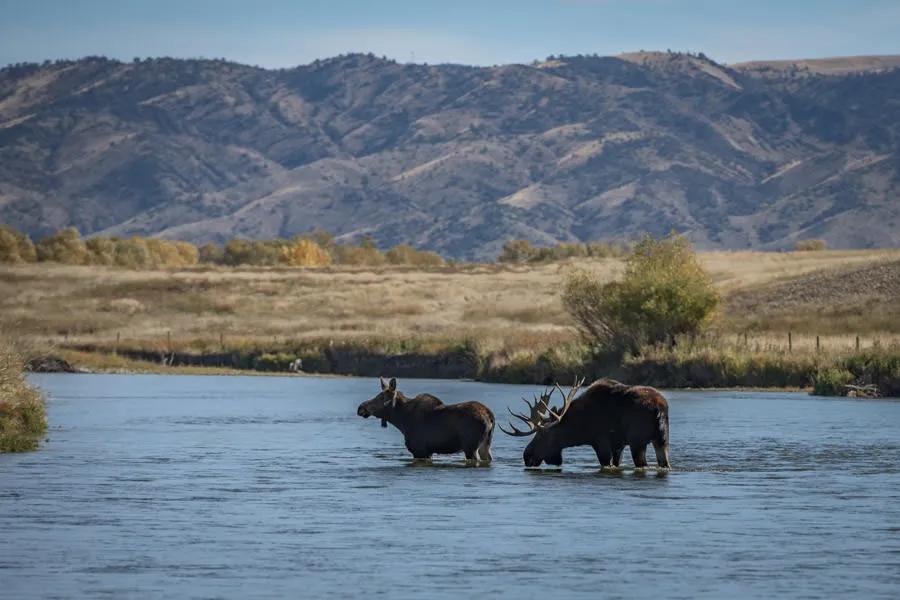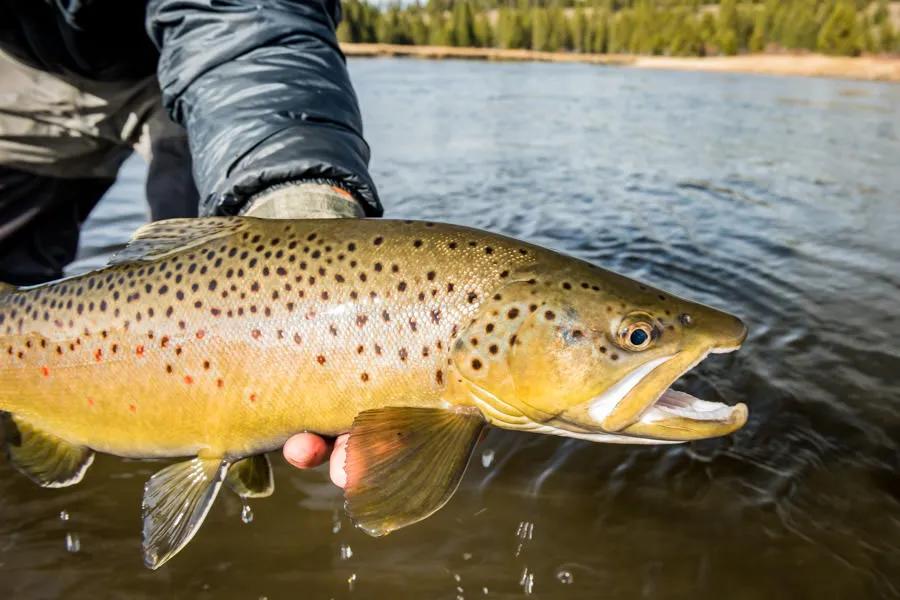
The secret of fly fishing for big brown trout in the fall is out. In fact, it's been out for decades. But, did you know there are certain rivers in Montana with a reputation of producing large trout once the frost grows thick on the pumpkin? With such a massive variety of fly fishing rivers, creeks, and lakes in Montana paired with a unique mix of angling towns that service these waters, choosing where to target these large autumn season brown trout isn't as easy as trolling Instagram accounts. For decades our Montana fly fishing guides embrace the fall season and the big fish it can produce. The summer tourists are gone, many of our rivers are less busy as a lot of anglers trade fly rods for bows and rifles and chase deer, elk, and other game animals. If you desire to land a Montana trophy trout during the fall angling season in Montana, here are Five Montana Rivers for Big Brown Trout.
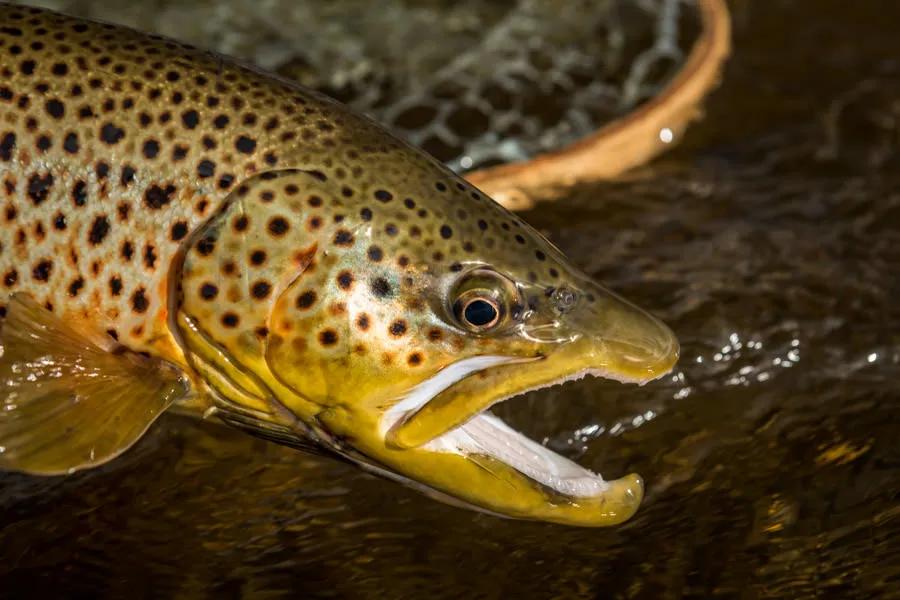
But...before we dive into the where's let's clarify what we mean by big brown trout and the tactics and techniques and the mindset required to get 'em. Most longtime Montana fly fishing guides consider a brown trout to be big once it passes the 20-inch mark. A trout over 24-inches passes into the realm of "fish of the year" and anything over 30-inches is possibly a Montana brown trout of a life-time. Many Montana fly fishing guides can work a lot of tricks to get inexperienced anglers into big fish, but the more experienced you are the better your odds become to tangle with some big fish. Other than being in the right place at the right time, to get brown trout longer than 20-inches you most likely need to dial in your cast and be able to cast at least 30 feet consistently. Being able to make a good drift and be somewhat adept with line management skills is also important. Implementing a variety of special casts like a reach cast or steeple cast can also go a long way to increase your odds of landing a two-foot trout. If you do fish with a guide, listening to your guide and trusting their instincts and wisdom will also go along way--keep in mind many Montana fly fishing guides' favorite season is the fall because of the prospect of big fish. Lastly, big trout rarely are not gifted. They are earned with persistence, patience, proficient skills, and a small sprinkling of luck.
Now that you understand what it takes, here's what you've been waiting for: the places in Montana to find big brown trout in the fall.
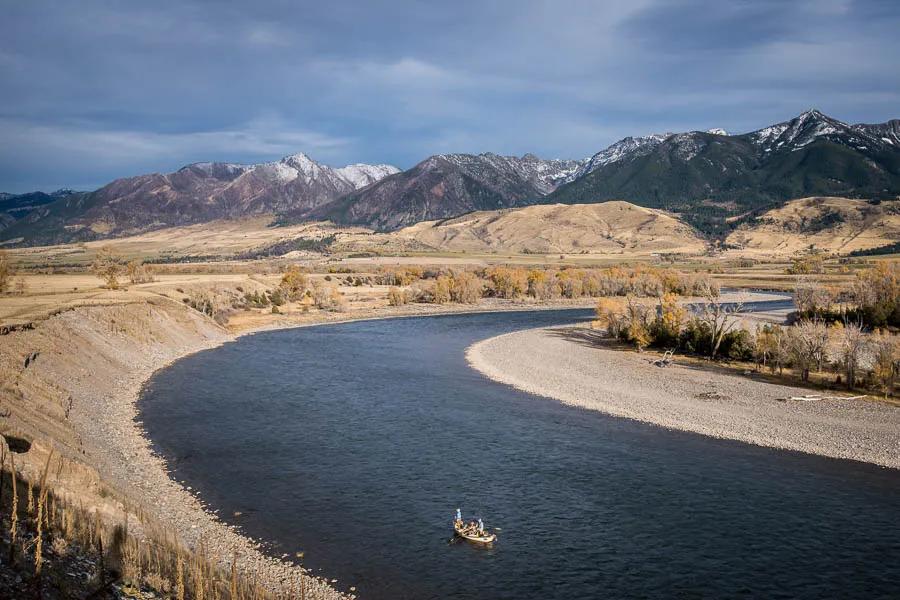
Yellowstone River
This is the largest undammed river in the Lower 48. It is wild, dynamic, and a favorite of many veteran fly fishing guides. It has also been producing consistently good-sized brown trout since recovering from massive flooding in 2022. Beginning in Yellowstone National Park, the large brown trout fishery of the Yellowstone River truly begins in the Paradise Valley area and runs nearly a 100 miles downstream near Billings. For many anglers, targeting brown trout in the fall is the goal. Brown trout are fall spawners and the largest fish in the river often let their guard down as they become preoccupied with reproductive activities. Casting large streamers on cloudy fall days can produce some heart stopping strikes from trophy sized fish. The best places to stay when targeting the Yellowstone River's trophy-sized brown trout are in Livingston or Bozeman. With few other anglers on the water and productive fishing, the fall season on the Yellowstone River is one of Montana's favorite rivers for big fish fall fishing.
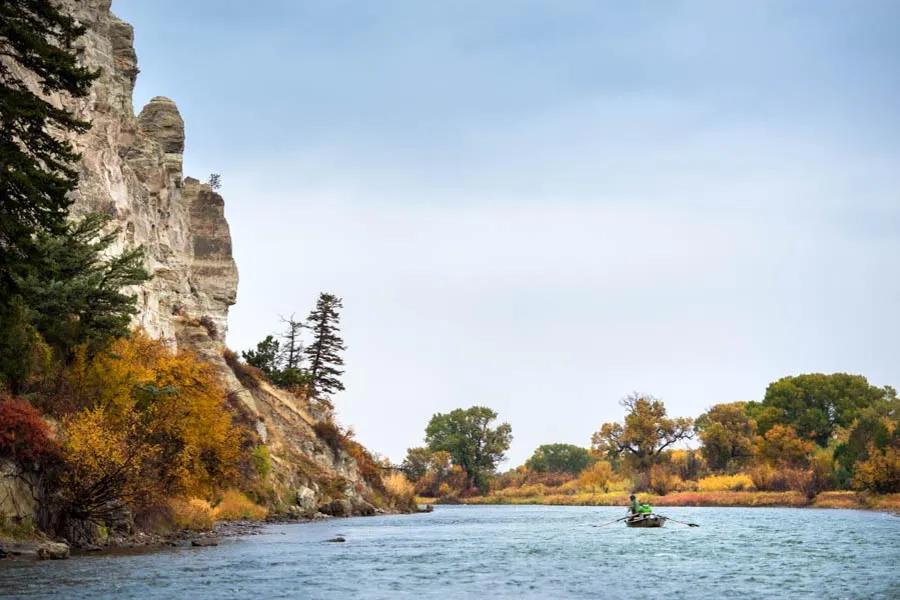
Lower Madison River
The Madison River is a world-famous river, but did you know it has two distinctly different sections? The Upper Madison is the river upstream of Ennis and closer to Yellowstone National Park. The Lower Madison is the river section closer to Bozeman and near the Headwaters of the Missouri River. For decades the great fall brown trout fishing on this river was relatively off-the-radar, but it was hard to keep the goodness of that secret under wraps and now the Lower Madison River and it's nearly 40 miles of water downstream of Ennis Lake is a destination fishery for anglers seeking big fish treasures in Autumn. The Lower Madison starts in Beartrap Canyon and requires a hike to fish it on foot or it can be floated by only expert whitewater rafters due to a class IV rapid and two other very technical class IIIs. During the fall, the canyon is home to some of the Lower Madison's largest fish, so be sure to touch up on your skills for fishing big canyon water.
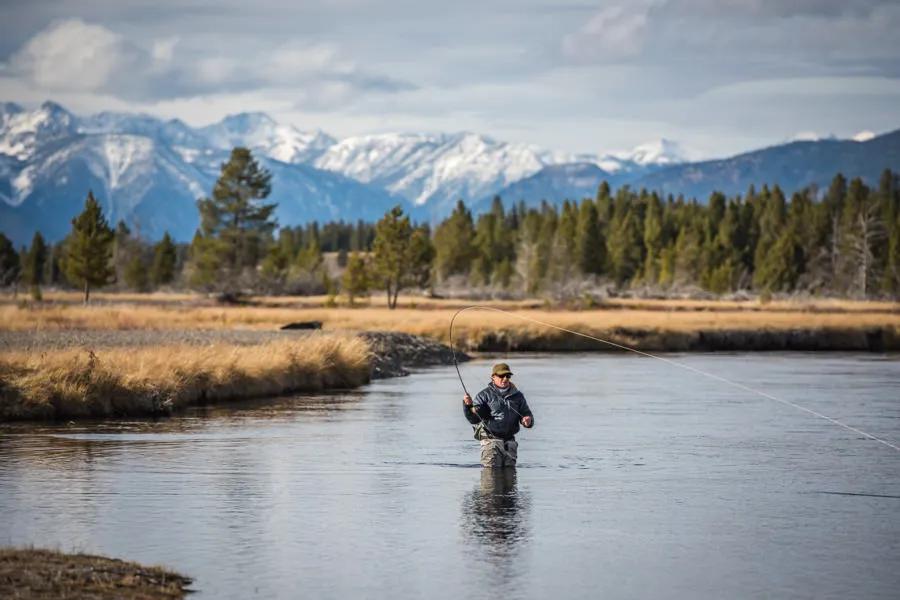
Upper Madison River
There are no secrets about the Upper Madison and its prolific brown trout fishery. But, what many anglers might still be unaware of on the Upper Madison is in what section to target the large brown trout in the fall. Because the Upper Madison can be broken down into a few sections. They are the following: the water in Yellowstone National Park to Hebgen Lake; the section between Hebgen Lake to Quake Lake and Quake Lake itself; and the water from Quake Lake outlet to Ennis Lake. During the fall months, throughout the river the browns are colored up and aggressive and this is a great time of the year to target huge trout, but let's look at each section.
Yellowstone National Park to Hebgen Lake
The Madison River in Yellowstone National Park and down to Hebgen Lake is a broad, shallow river so the most challenging aspect of this fishery is locating the runs that hold fish, which sometimes can be miles apart. The most popular area, by far, is a group of deep runs located just inside the Yellowstone National Park boundary known as the Barnes Pools. Yellowstone National Park does not allow float fishing, so this is strictly a wade fishery. Both nymphing under an indicator and streamers are popular and effective techniques here. Once the river leaves Yellowstone National Park it is a large, meandering meadow stream before it enters into Hebgen Lake. There are some sneaky spots here and there that hold fish, and that is the reward for the adventurous angler who takes the time to learn the fishery.
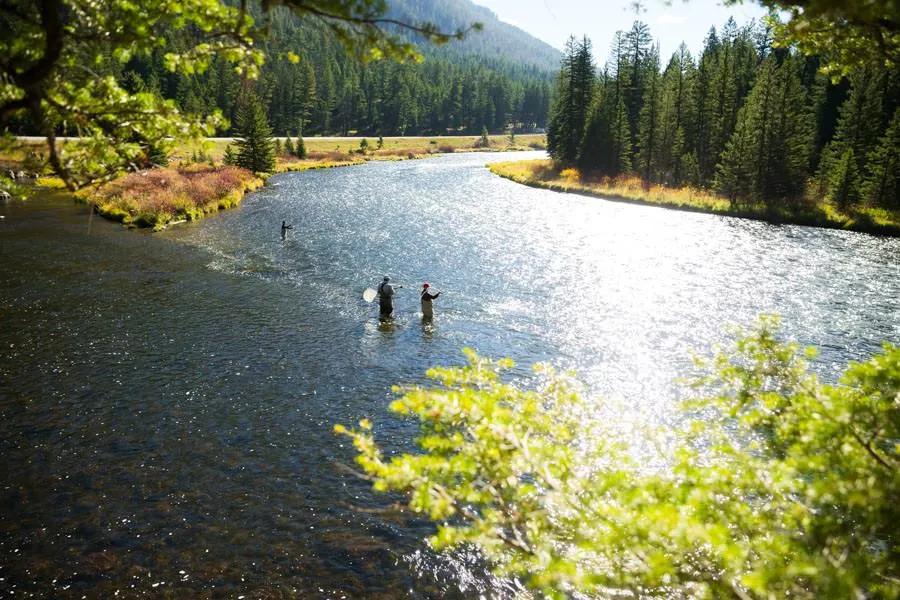
Hebgen Lake to Quake Lake, aka Between the Lakes
Though it’s barely two miles long, this stretch holds an extraordinary number of fish due to the fertile tailwater environment and close proximity to the lake. However, the population is greatly skewed towards rainbow trout, so this section sees the fewest number of fall run brown trout. Though much fewer in number, this section holds the biggest browns in the river. In 2013, a dead brown trout that measured 38” and weighed 35lbs was found in the area and several fish over 30” have been caught in the last few years. While your odds of catching a fish this size are astronomically low, it is a good feeling knowing you are fishing water with such potential.
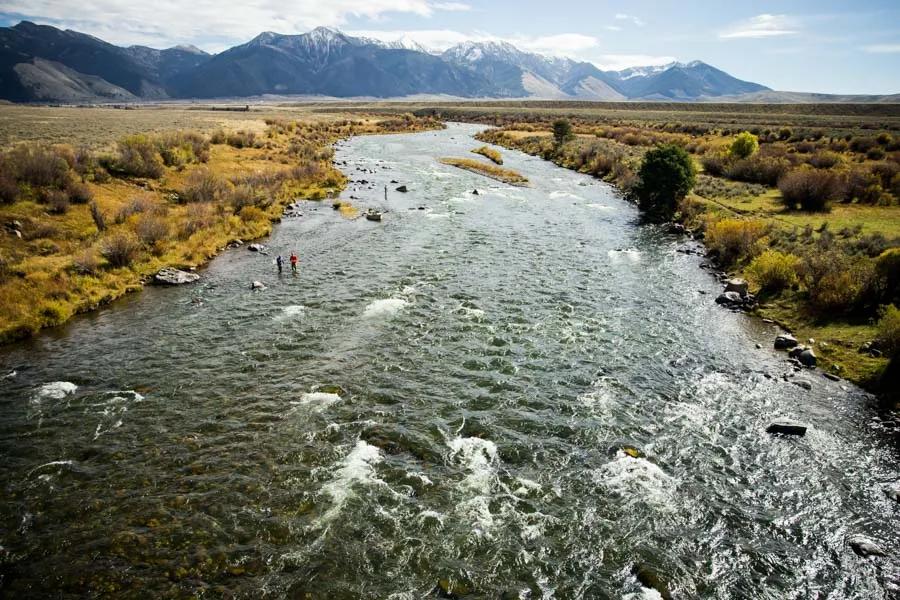
Quake Lake to Ennis Lake--the famous "50 Mile Riffle"
While the entire run of the river from Quake Lake to Ennis Lake can fish well for big brown trout in the fall, most anglers searching for big fish focus on the ten or so miles downstream from Quake Lake and the last dozen or so miles upstream of Ennis Lake. The section of river below Quake Lake is best fished with subsurface nymphs and is restricted to walk-and-wade fishing only. There can be some large fish caught here in the fall, but most anglers target the fish running upstream from Ennis Lake. There, floating anglers can fish from a boat from Varney Bridge access to Ennis Fishing Access. Downstream of Ennis Fishing Access anglers can use a boat but must get out of the boat to fish. Access here is tough as the river is in a bit of a willow jungle, so the preferred strategy is to use a boat to move from hole to hole, which is allowed as long as you exit the boat before you start fishing. Fish will start pushing into this section in mid-late September, and by mid-October will be dispersed throughout the river quite a ways upstream. The fish count here falls somewhere in between Yellowstone National Park (the most) and Between the Lakes (the least). Pressure is less here as well, given the necessity of a boat to reach much of the fishing.
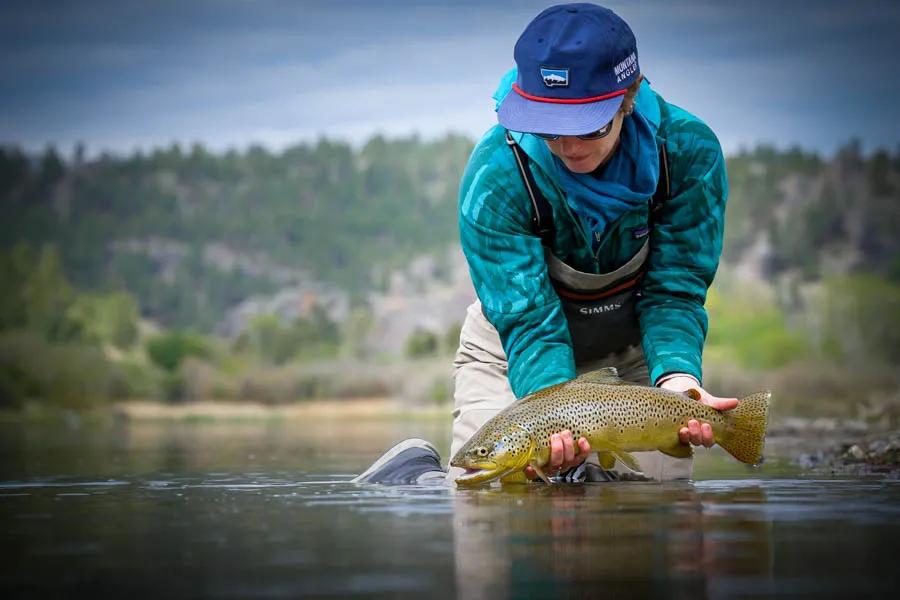
Missouri River
While not known as a world-class fall fishery, but probably should be, the Missouri River near Helena and Great Falls is a tailwater with over 6,000 fish per mile...so naturally some of the fish are going to be big. After the long, hot days of summer transition to the comfortable and mellow weather days of fall, local anglers on the Missouri River are rejuvenated and ready to fish this central-Montana tailwater. Hatches of Blue Winged Olives are consistent on the river downstream from Wolf Creek all the way to Cascade. By mid-September the aquatic, pelagic weed growth from late summer dies out and streamer anglers are rewarded with opportunities to fish the variety of predatory trout habitat that exists on the Missouri River--bankside structure, drop-offs below shelfs, long shallow flats, and undercut banks. Dry fly anglers can also enjoy the region's most reliable October caddis hatches. To learn more about the exciting fall fishing, read about the Missouri River in September and the Missouri River in October.
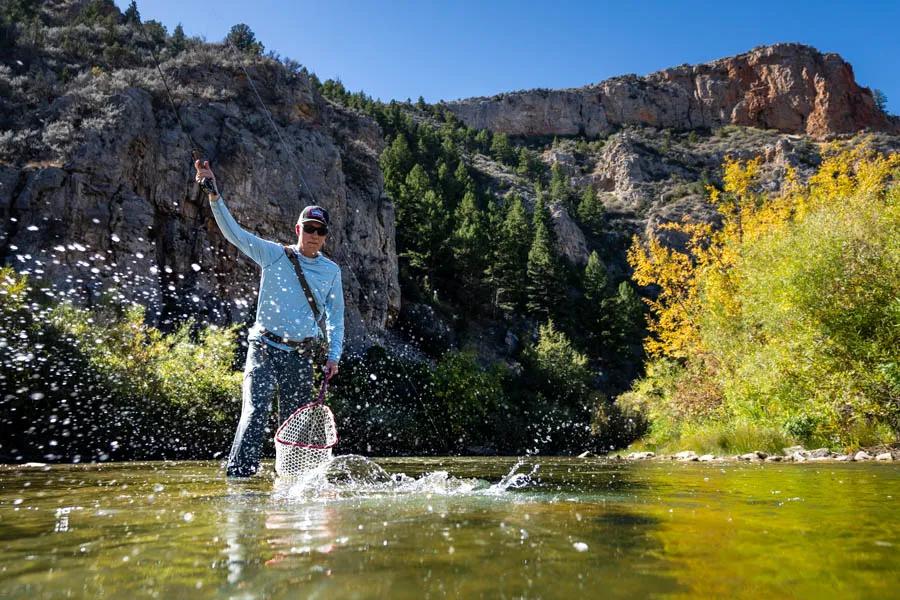
Guide's Choice aka No Tellum Creeks and Rivers
The rivers above are known throughout the world for consistently great fishing. But Montana is also home to hundreds of miles of smaller creeks and rivers that can produce large trout. However, in general the larger rivers are going to produce the largest specimens during the fall--that is mainly a result of the larger rivers simply having a greater abundance of the habitat and food required to grow big trout. But large trout aren't exclusive to the large, well known rivers. For decades our Montana fly fishing guides have found plenty of places to target big trout that take a little extra sleuthing to discover. Without giving away these special places, there are a few ways to help you find your own No Tellum Creeks and Rivers. First, consider smaller tributaries of larger rivers. Second, be willing to fail some when fishing new waters before you succeed. Third, be a map nerd and try to find some off-the-grid waters that others may not put in the time to find. Lastly, know the Montana Stream Access Law and never trespass.
Montana is known for some of the best accessible fly fishing on the planet. Sure there are plenty of places in the world that also have large trout--such as Chile's Patagonia Baker Lodge or River of Dreams Basecamp--but these require international travel and a week or more of adventure. A fly fishing trip for large brown trout in Montana can be had in whatever duration your schedule allows. If you're lucky enough to live near one of the great angling towns in Montana, than your fall fly fishing trip is just a matter of finding the time to get out and hunt for the big fish of the fall.
